CS1050, Spring 2006, Project 7
Delaunay Triangulation
by Jacob Bolton
Email: 
Submitted: March 12, 2006
Click to insert new sites
Drag to move them
Drag them out of scree to delete
Press 'f' to recenter and rescale the sites
Press 'd' to hide/show circumcenters
Press 'n' to hide/show sie numbers
Only on local machine:
Press 'w' to print the points
Press 's' to save the points
Press 'l' to load saved points
Press 'i' to save a snapshot
My algorithm examines all possible triangles from the n points, and for each possible triangle
it checks to see if any of the other points are within the inscribed circle. If no other points
are within, then it is a Delaunay triangle. The number of possible triangles is number of
combinations of 3 different points from the set of n points, and that means there are
(n - 3) other points. The worst-case complexity for this algorithm is thus:

Here are some screenshots of randomly generated sets of points being processed and timed. The timing should verify the worst-case complexity formula.
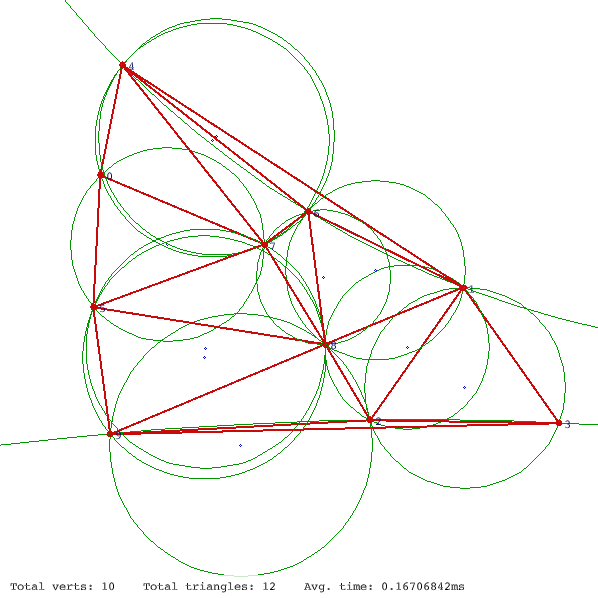
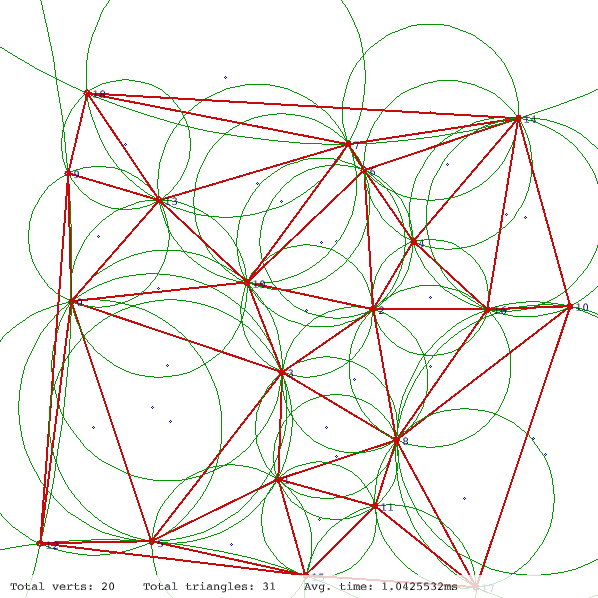
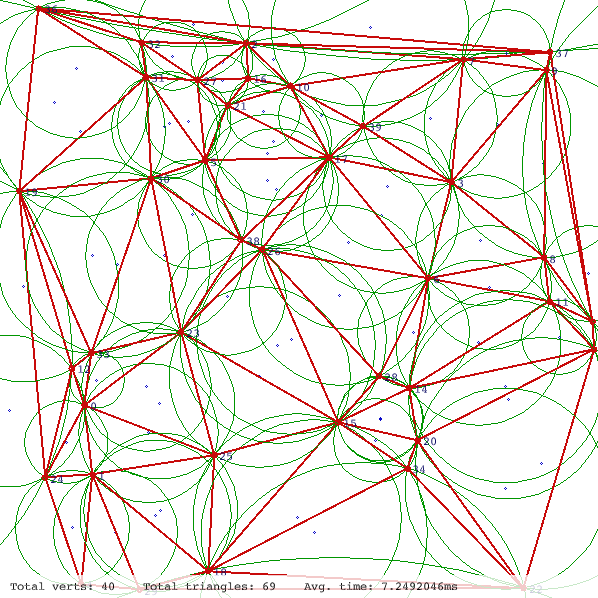
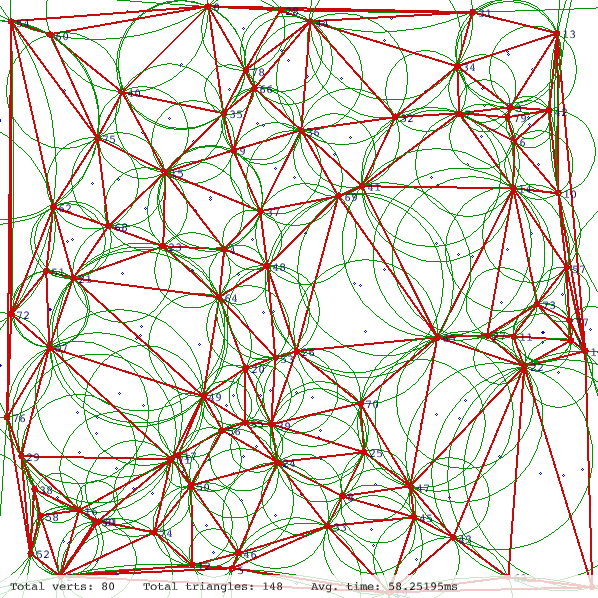
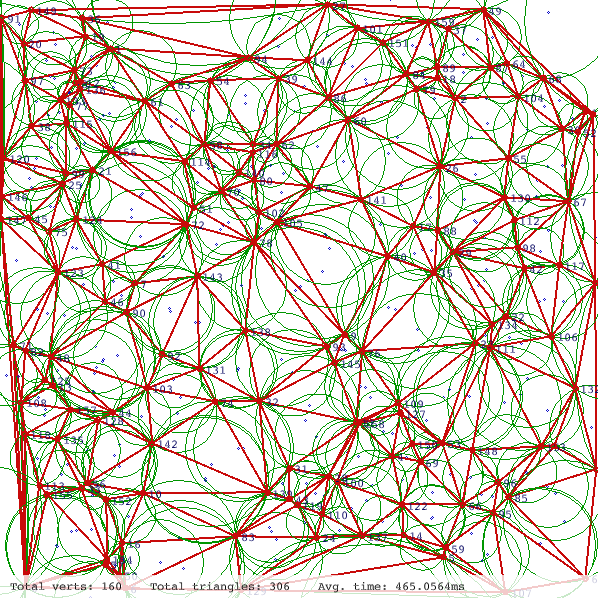
These results are summarized here:
| Points | Triangles | Avg. Time | Time Change (from previous set) |
|---|---|---|---|
| 10 | 12 | 0.17 ms | na |
| 20 | 31 | 1.0 ms | 5.9x |
| 40 | 69 | 7.2 ms | 7.2x |
| 80 | 148 | 58 ms | 8.1x |
| 160 | 306 | 470 ms | 8.1x |
Built with Processing